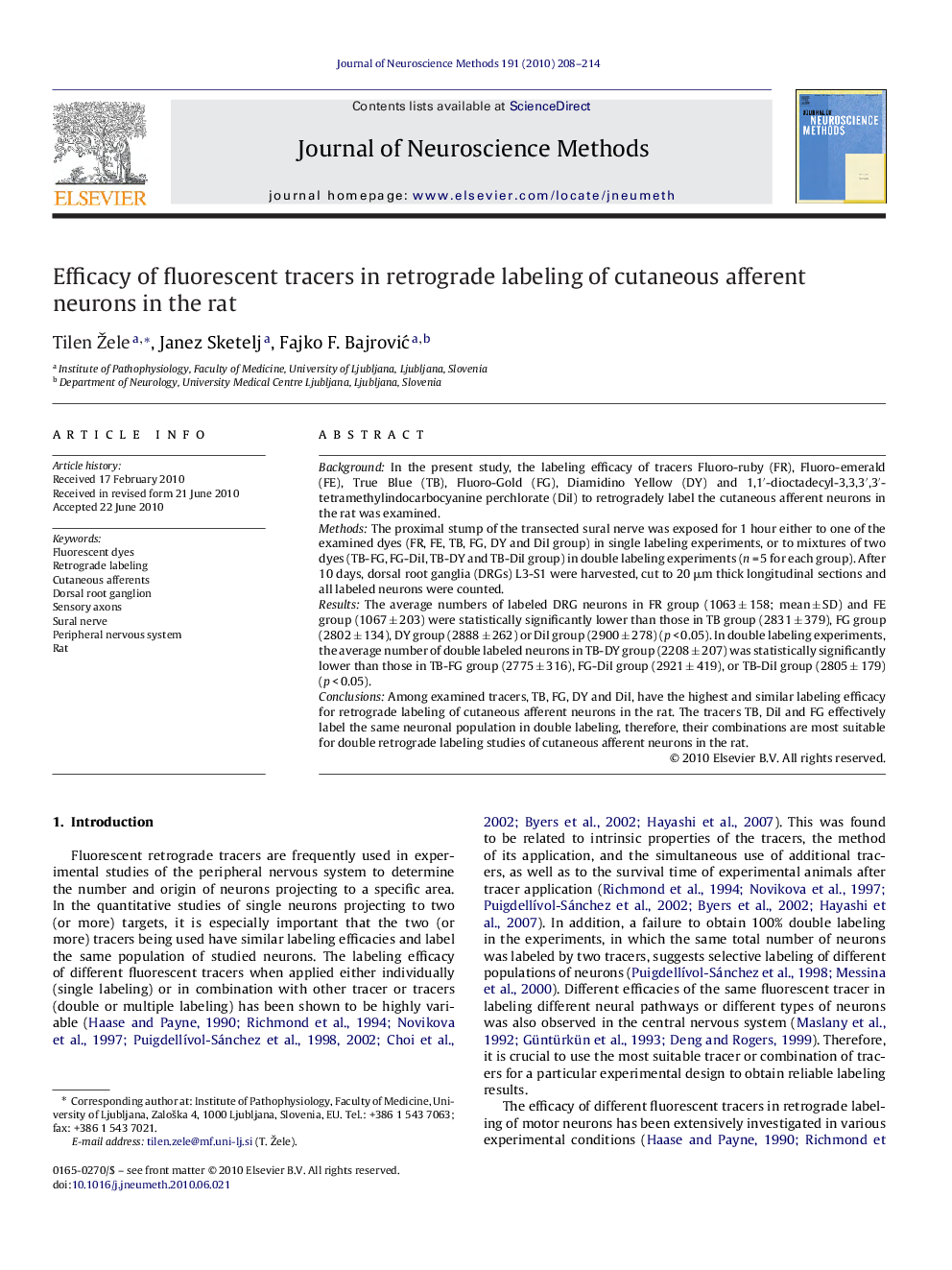| Article ID | Journal | Published Year | Pages | File Type |
|---|---|---|---|---|
| 4335572 | Journal of Neuroscience Methods | 2010 | 7 Pages |
BackgroundIn the present study, the labeling efficacy of tracers Fluoro-ruby (FR), Fluoro-emerald (FE), True Blue (TB), Fluoro-Gold (FG), Diamidino Yellow (DY) and 1,1′-dioctadecyl-3,3,3′,3′-tetramethylindocarbocyanine perchlorate (DiI) to retrogradely label the cutaneous afferent neurons in the rat was examined.MethodsThe proximal stump of the transected sural nerve was exposed for 1 hour either to one of the examined dyes (FR, FE, TB, FG, DY and DiI group) in single labeling experiments, or to mixtures of two dyes (TB-FG, FG-DiI, TB-DY and TB-DiI group) in double labeling experiments (n = 5 for each group). After 10 days, dorsal root ganglia (DRGs) L3-S1 were harvested, cut to 20 μm thick longitudinal sections and all labeled neurons were counted.ResultsThe average numbers of labeled DRG neurons in FR group (1063 ± 158; mean ± SD) and FE group (1067 ± 203) were statistically significantly lower than those in TB group (2831 ± 379), FG group (2802 ± 134), DY group (2888 ± 262) or DiI group (2900 ± 278) (p < 0.05). In double labeling experiments, the average number of double labeled neurons in TB-DY group (2208 ± 207) was statistically significantly lower than those in TB-FG group (2775 ± 316), FG-DiI group (2921 ± 419), or TB-DiI group (2805 ± 179) (p < 0.05).ConclusionsAmong examined tracers, TB, FG, DY and DiI, have the highest and similar labeling efficacy for retrograde labeling of cutaneous afferent neurons in the rat. The tracers TB, DiI and FG effectively label the same neuronal population in double labeling, therefore, their combinations are most suitable for double retrograde labeling studies of cutaneous afferent neurons in the rat.
